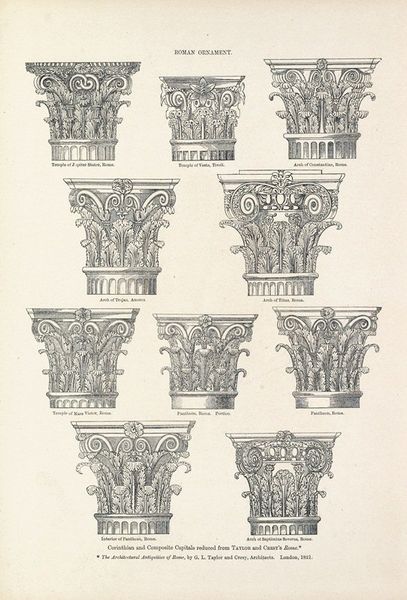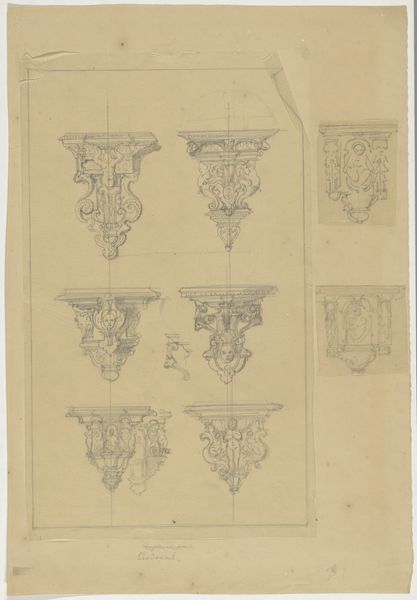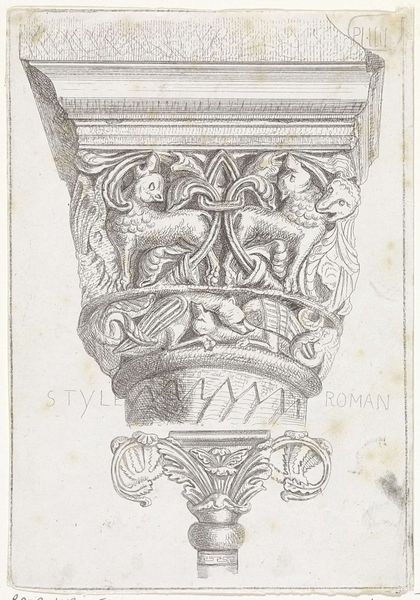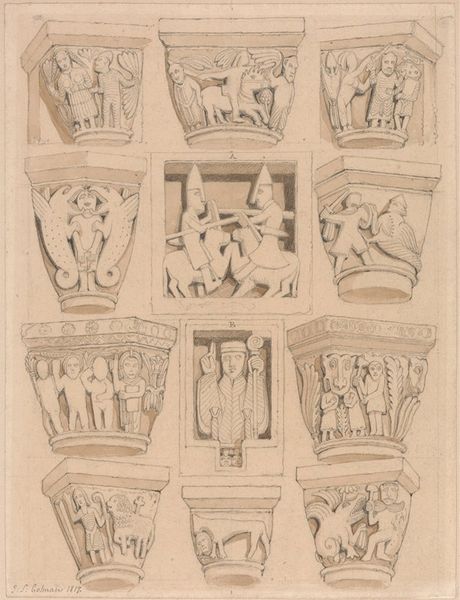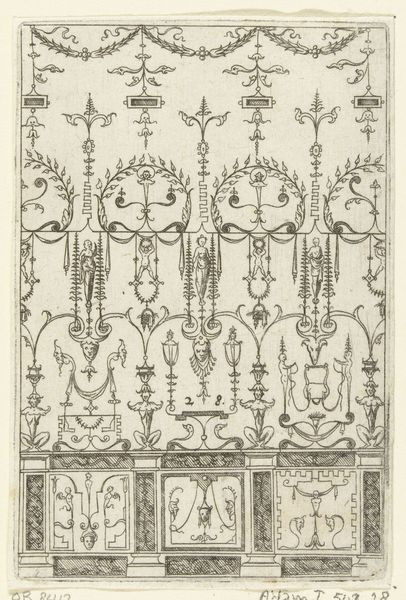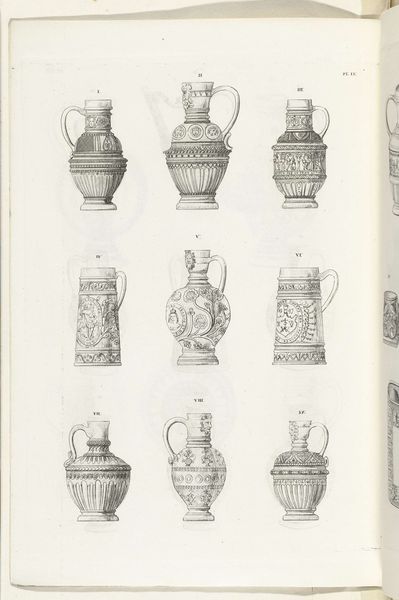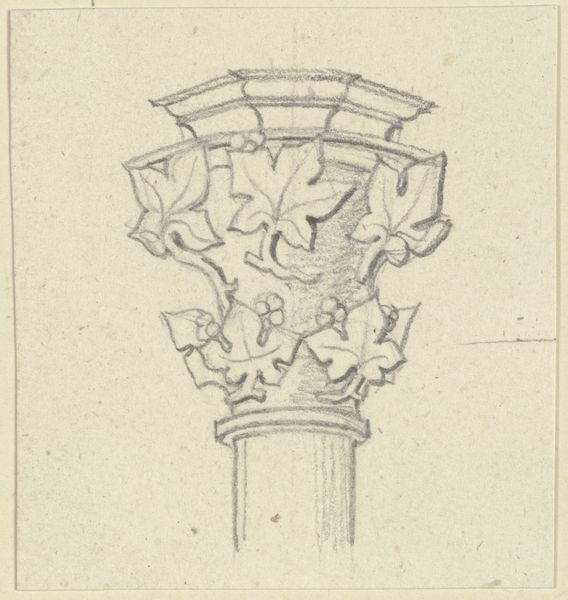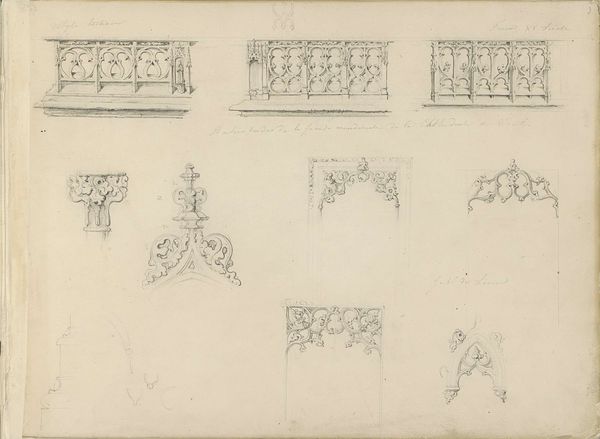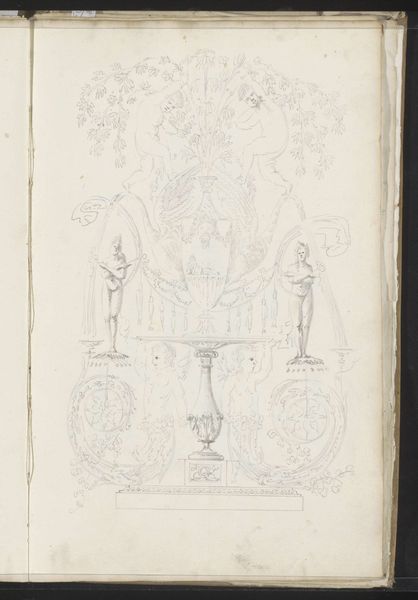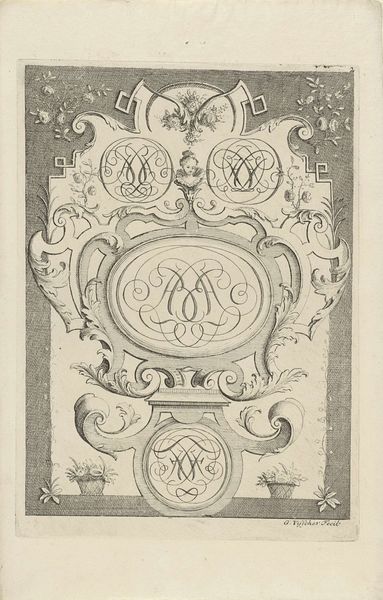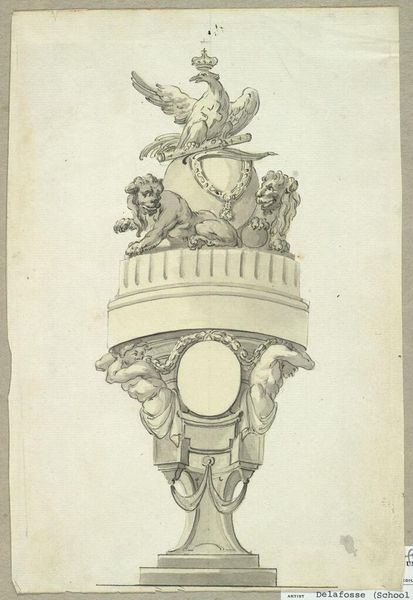
Capitals in the Abbey Church of St. Georges de Bocherville, near Rouen, Normandy 1818
0:00
0:00
drawing, architecture
#
architectural sketch
#
drawing
#
etching
#
geometric
#
romanticism
#
academic-art
#
architecture
Copyright: Public Domain: Artvee
Curator: Looking at this work by John Sell Cotman, “Capitals in the Abbey Church of St. Georges de Bocherville, near Rouen, Normandy,” created in 1818, I'm immediately struck by the intricate detail he captures. The drawing presents a study of architectural elements, rendered in what looks like pencil or ink. Editor: Yes, there's a stillness to it. For me, there’s almost a meditative quality, as though the artist invites us to reflect on the ways structures from the past speak into our present. I also see a sort of record, archiving architectural features from a specific time and place. Curator: Exactly! The careful arrangement of the different capital designs allows for a real understanding of proportion and decoration. Notice how Cotman varies his rendering, almost teasing out the different sculptural qualities of each capital, some of them reminding me of blossoming flowers frozen in stone. Editor: I think it also speaks to a certain kind of architectural colonialism, if you will. During the Romantic period, there was this fascination with the ‘authenticity’ of ruins, of older buildings. These architectural drawings function to transport features from one context to another, a way of possessing a cultural artefact from a position of power. Curator: That's a fascinating, perhaps a slightly controversial perspective. But also the drawings provide crucial architectural documents to our time as the architecture disappears. Also the emotional depth in capturing these forms suggests he may be responding to something other than simple documentation. Each line and tone carries his experience, maybe nostalgia, perhaps melancholy at the passage of time. Editor: I agree; they embody both observation and feeling. It brings up ideas of heritage, its preservation, and its implications on the collective memory. As an architectural document, it’s hard to ignore who gets to archive the world and the selective canon-making processes inherent in what we see. Curator: You know, these differing layers add another facet to these beautifully illustrated architectural studies! Editor: Absolutely. A quiet meditation and charged social statement wrapped up together, prompting reflection long after our gaze departs.
Comments
No comments
Be the first to comment and join the conversation on the ultimate creative platform.
